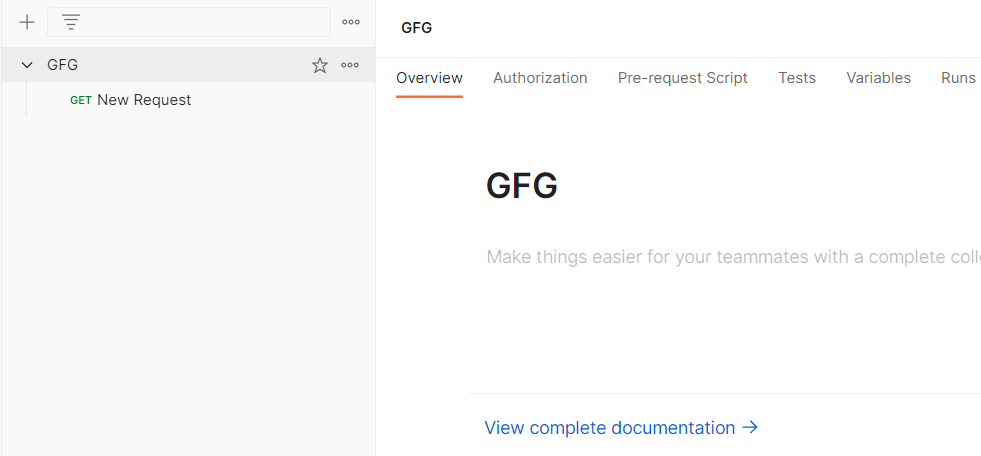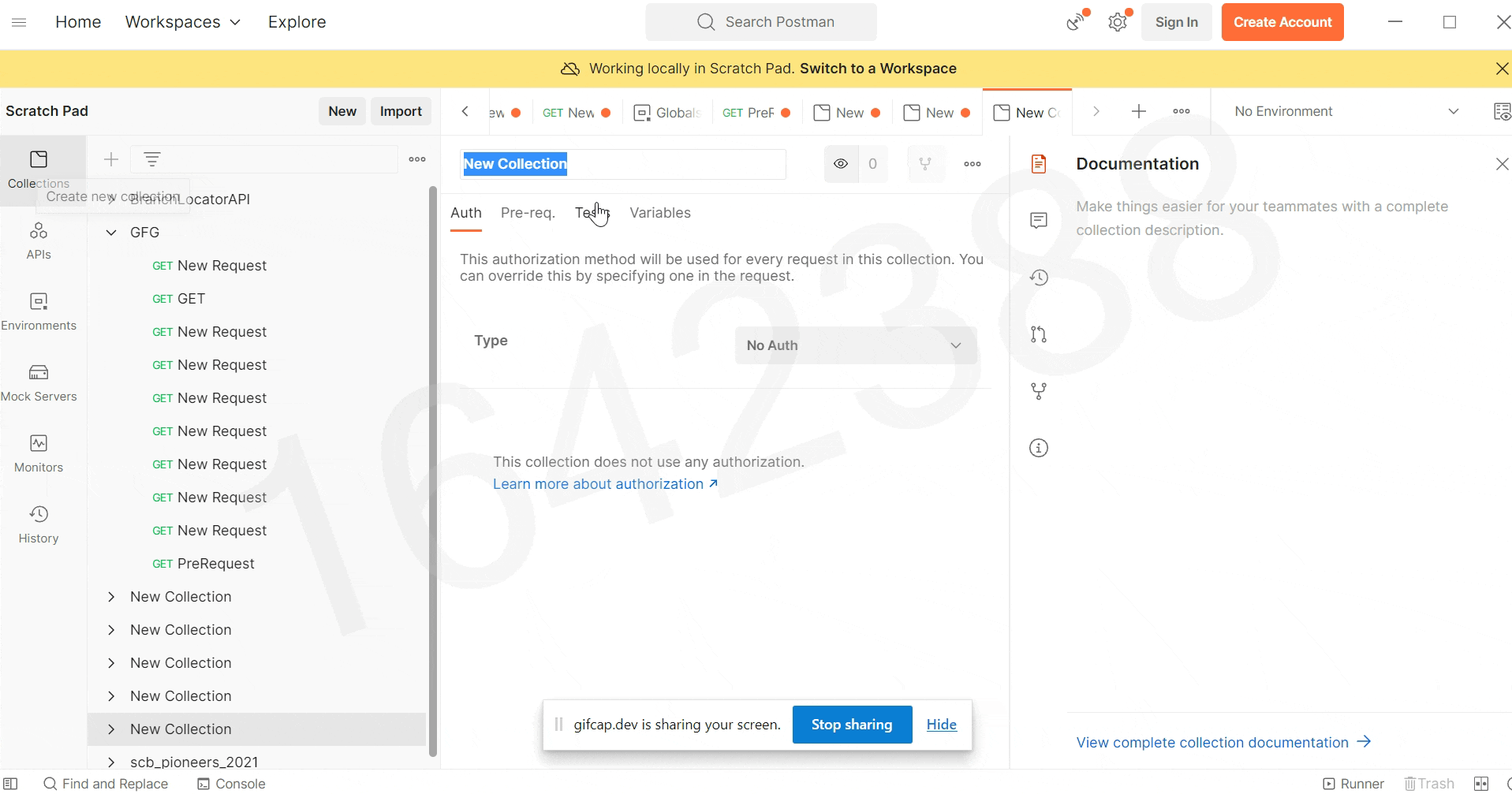Role of Postman in the API development lifecycle.
Last Updated :
04 Jan, 2024
Postman is an API(application programming interface) development tool which helps to build, test, and modify APIs. Almost any functionality that could be needed by any developer is provided by this tool. It can make various types of HTTP requests(GET, POST, PUT, PATCH). In this article, we will explore the role of Postman in the API development lifecycle.
Prerequisites:
API Lifecycle Stages:
The API development lifecycle involves a series of stages, that includes:
- Define: This stage clearly outline the purpose and functionality of your API. Define the endpoints, data formats, and any specific requirements.
- Design: Create a comprehensive API design, including request and response structures. Use tools like Postman to design and document your API’s structure.
- Develop: Write the actual code for your API, adhering to the design specifications. Leverage Postman’s code generation features to streamline development.
- Test: Implement thorough testing to ensure the API functions as intended. Utilize Postman’s testing capabilities to automate and execute test scenarios.
- Secure: Implement security measures to protect your API from potential threats. Leverage Postman for testing security aspects, such as authentication and authorization.
- Observe: Monitor the API’s performance and gather insights using Postman monitors. Set up logging and analytics to track usage, errors, and other relevant metrics.
- Optimize: Based on observations, optimize the API for better performance and efficiency. Use Postman’s insights to identify areas for improvement and implement necessary changes.
- Distribute: Deploy the API to the intended environment, making it accessible to users. Leverage Postman to manage versions, documentation, and provide a seamless distribution process.
Role of Postman in different stages:
Postman plays a crucial role in the API (Application Programming Interface) development lifecycle, contributing to various stages of the process.
1. Design Phase:
- Postman assists in the initial API design by providing a user-friendly interface for creating and visualizing API specifications.
- Developers can define endpoints, request methods, parameters, and response structures using Postman’s API schema and documentation features.
- Collaborative design is facilitated through sharing collections, allowing team members to review and provide feedback.
2. Development Phase:
- During the coding phase, Postman supports developers in testing individual API endpoints even before the full backend implementation is completed.
- Collections in Postman can be used to create and organize requests for different API endpoints, allowing developers to verify the correctness of their implementations incrementally.
3. Testing Phase:
- Postman simplifies the testing process by enabling the creation of comprehensive test suites within collections.
- Automated tests can be defined using Postman scripts, including pre-request and post-response scripts, ensuring that each API endpoint functions as expected.
- Developers can simulate different scenarios and edge cases, verifying the robustness and reliability of the API.
4. Collaboration and Documentation:
- Postman acts as a central hub for API documentation, automatically generating documentation based on the defined API specifications and examples.
- Teams can collaborate on API development by sharing collections and workspaces, fostering communication and knowledge sharing.
5. Continuous Integration/Continuous Deployment (CI/CD):
- Postman can be integrated into CI/CD pipelines, allowing for automated testing of APIs as part of the deployment process.
- The Postman API can be leveraged to trigger collections programmatically, ensuring that API changes don’t introduce regressions.
6. Monitoring and Debugging:
- Postman provides tools for monitoring API performance and debugging. Developers can analyze responses, track request times, and identify potential bottlenecks.
- The ability to view and inspect HTTP requests and responses aids in diagnosing issues during development and testing.
Example:
In this example we will explore the API testing phase by creating 2 test cases and then test them
Step 1: After downloading and installing the Postman, open the software. Add a new Collection and give it a name like “GFG”. Here, we can see, multiple tabs like Authorization, Pre-request scripts, Tests , Variables.

Step 2: Click on Tests. Now in the right side pane, we can multiple snippets arrived. We can use any of the available snippet/test or create our own test based on our requirement. Code is written in JavaScript.

We will write 2 Tests in JavaScript from the already available snippets from the right-hand side pane.
First Test: This will check whether the response time is less then 200ms
pm.test("Response time is less than 200ms", function () {
pm.expect(pm.response.responseTime).to.be.below(200);
});
Second Test: This will check whether status code is 200
pm.test("Status code is 200", function () {
pm.response.to.have.status(200);
});
Step 3: Click on Save
Step 4: When you hover, on the name of your collection, 3 dots will appear. Click on those 3 dots, and then click on “Add new request”

Step 5: Now You can simply paste the API in the space provided and select the API type you are requesting from the dropdown like GET,POST, PUT, DELETE etc. Output will be shown in the body with the status code.
API Used:
https://jsonplaceholder.typicode.com/posts/1
Step 6: You can see the Test-execution scripts results in tab Test Results; as shown below

Output

Share your thoughts in the comments
Please Login to comment...